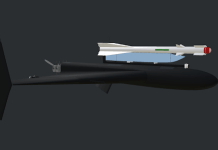In a bid to acquire the latest, state-of-art stealth fighter jets, will India join the Tempest, the British-led project to develop a new sixth-generation fighter jet with Italy and Sweden?
British & NATO Jets Jamming The Radars Of Powerful S-400 Systems – Russian Experts
As reported last year, India had been invited by the United Kingdom to jointly develop the next-gen fighter under the Tempest Future Fighter Aircraft project.
Officials of the British Ministry of Defense (MoD) along with executives from BAE Systems were expected to brief Indian Defence Ministry and Indian Air Force (IAF) officials regarding the project. Nik Khanna, head of BAE Systems India, while speaking to the Business Standard back then, had said –
“We are looking for international partners to access the best-assured capability (for developing the Tempest).”
While referring to the specific role of New Delhi in the Tempest Project, Khanna said – “A big cost driver for a futuristic aerospace system is going to be the requirement for more and more software engineers. India has a huge capability in that area.”

However, despite no developments on India’s role in the Tempest project and proposal almost falling through, it seems that New Delhi could still join the program along with the likes of Japan and the Netherlands.
“Time remains for other partners to join Tempest. You have seen other nations express an interest and we are extremely positive for the future,” said Alessandro Profumo, CEO of Italian Defence Giant Leonardo, while speaking to Reuters recently.
In 2007, India and Russia had agreed to jointly build a fifth-generation fighter jet called Sukhoi/HAL Fifth Generation Fighter Aircraft (FGFA) or Perspective Multi-role Fighter (PMF). However, with India deciding to withdraw from the FGFA program in 2018, the project was suspended. Though, it is reported that the project would be resumed at a later stage after Russia’s latest fifth-generation fighter Su-57 becomes fully operational.
THE TEMPEST PROGRAM
Launched in 2018, the Tempest Program aims to develop optionally-manned stealth fighters, expected to enter service by 2040. British Education Secretary and then Defence Secretary Gavin Williamson had unveiled the model of the Tempest at the Farnborough Air Show held in Northeast Hampshire last year.
While the UK has committed initial funding of £2 billion ($2.6 billion) to the Tempest Project, it has now been joined by Italy and Sweden as partners via aerospace giants Leonardo and Saab, with rumors of the Netherlands joining in too.
According to the British government this year, seven more companies have been recruited into the program with the number of people on Team Tempest likely to increase from 1.800 to 2,500 by 2021.
The Tempest fighter jet will be developed in what looks like an ensemble of worldly aerospace and defense giants. The program will be led by BAE Systems, with Rolls Royce contributing engines, European missile developer MBDA integrating weapons and Italian firm Leonardo developing sensors and avionics.
FEATURES
The Tempest is a large single-seated twin-engine delta-wing stealth fighter jet with a cranked trailing edge and two vertical stabilizers slanted inwards, similar to a US F-22 jet.
With Stealth technology a prerequisite for any sixth-generation fighter jet, the Tempest is set to boast a laundry list of features including being optionally manned, mounting hypersonic or directed energy weapons, and the ability to deploy and control drone swarms.
According to Rolls Royce, the stealthily recessed adaptive-cycle turbofans of the fighter will be built of lightweight composite materials, featuring superior thermal management and digital maintenance controls which will enable it to generate large quantities of electricity through magnets in the turbine cores.
WEAPONS
The fighter jet will boast a modular internal payload bay that can be reconfigured for various sensors and weapons. Its larger airframe will enable it to have a greater range and weapons load than that of the fifth-generation US F-35 fighters, which are also deployed by the Royal Armed Forces.
As listed at the Tempest’s mockup at the Farnborough presentation, the fighter can be deployed with Meteor long-range air-to-air missiles and SPEAR-3 cruise missiles and is compatible with the next-generation “Deep Strike” missiles.
The list also includes hypersonic missiles, which can travel over five times the speed of sound, making interception extremely difficult. The Tempest will also be able to use the swarming technology to control unmanned aerial vehicles (UAV) and would be able to send swarms of deadly drones as offensive capabilities.
In a bid to ease the workload on the pilot, the fighter can choose to use artificial intelligence (AI) and machine learning to optimize the drone’s behavior.
Moreover, the surplus energy would be duly utilized in the Tempest fighter to power Directed-energy weapons (DEW), which can damage targets with highly focused energy, including laser, microwaves and particle beams.
SENSORS
The Tempest fighter jet will employ a diverse array of passive and active sensors, with “Cooperative Engagement” technology allowing it to fuse sensor data with friendly aircraft, ships or ground forces using “reconfigurable” communication systems and data links.
This will enable the fighter to hand off sensor data from one platform to another, enabling it to launch missiles without being exposed.
Moreover, the pilot flying the Tempest will be equipped with a helmet-mounted device, enabling him or her to gaze through the plane. The helmet could eventually also end up replacing conventional cockpit display panels.
RADARS
While no performance parameters such as maximum speed, range, radar cross-section etc have been specified so far, Leonardo UK has demonstrated the performance of a new radar receiver/warner technology as part of the Tempest program.
The new sensor demonstrated a direction-finding performance of four times what is possible with a typical radar warning receiver while being just 1/10th the size of a standard system.
According to Leonardo, “In future, threat radars are likely to use a range of technologies and software techniques to make it harder to identify their signals, meaning that Tempest’s sensors will need to be sophisticated enough to be able to counter such techniques and flexible enough to be updated in response to new technologies as they emerge on the battlefield.”
OPTIONALLY-MANNED
The Tempest fighter jet is set to be “optionally planned”, which means it can be flown remotely without an onboard pilot, depending on the preference and suitability of the combat mission.
While Unmanned Combat Air Vehicles (UCAV) are considered the future of advanced air warfare, most nations are taking it easy by contemplating optionally-manned fighters.
One of the main purposes of opting for optionally manned fighters is to avoid putting pilots at risk on dangerous missions but the choice comes at a huge cost and performance disadvantages of a manned fighter jet.
Moreover, with the networked computers of the F-35s showcasing vulnerabilities to hacking, the presentation showcased Tempest’s “resilience to cyber-attack” as a key characteristic.
STEALTH FEATURE
The Tempest fighter jets will utilize stealth technology to go undetected on enemy radars. With the technology already a significant part of the fifth-generation jets, a sixth-generation jet will have it on board and there might be even few further improvements on it, considering whether nations can crack the systems of Russian-made S-400s or S-500s, who are known as “Stealth-Killers”.
The Tempest, which itself is a successor to the BAE Replica, a two-seat British stealth-fighter concept abandoned in 2005, will look to replace the British air fleet of the Eurofighter Typhoons. It is expected to complement the US F-35s, further acquisitions of which will not be impacted by the development or introduction of the Tempest fighters.
WHAT ABOUT OTHER 6-GEN JETS?
The Tempest is not the only sixth-generation fighter jet currently in development with other countries looking to be in the fray as well.
It has been reported that Russia has been developing its next-generation fighter under the grand military alliance of Russian aerospace juggernauts Mikoyan (MiG) and JSC Sukhoi.
The United States has secretly tested the prototype of their upcoming fighter jet Assistant Secretary of the Air Force for Acquisition, Technology and Logistics, Dr. Will Roper, stating – “We’ve already built and flown a full-scale flight demonstrator in the real world, and we broke records in doing it. We are ready to go and build the next-generation aircraft in a way that has never happened before.”
Lastly, China’s latest jet under development is touted to trump all the characteristics of the F-35s, with it also being labeled as a “Super F-35”.
According to Global Times, a daily newspaper under the auspices of the Chinese Communist Party (CCP), the next-generation aircraft is said to be revolutionary.
“A revolutionary, cognition-subverting next-generation fighter jet, characterized by long-range, high capabilities in penetration, awareness, firepower and fast decision-making, is about to come into being amid great power competition.”




